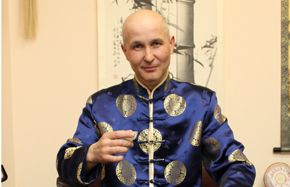Strategic synergy for global security
Among the dynamics reshaping Eurasia, the transformation of relations between China and Turkey does not get the attention it deserves. Certainly from a Western perspective it is a geopolitical blind spot.
The differences between the two countries appear, at first glance, considerable. China's territory is more than 10 times larger than Turkey's, its population 20 times larger and the Chinese GDP more than 10 times that of Turkey.
But if one takes into account the countries composing the International Organization of Turkic Culture Turkey, Azerbaijan, Kazakhstan, Kyrgyzstan, Turkmenistan and Uzbekistan the asymmetry between the Turkic sphere and the Chinese world is substantially reduced.
Moreover, there are striking similarities between the two members of the G20. Both countries share indelible imperial memories. The Yuan (1271-1368), Ming (1368-1644) and Qing dynasties (1644-1911) were contemporary with the Ottoman Empire (1299-1922), and the sumptuous Chinese porcelain collection of the Topkapi Palace, the residence of the Ottoman sultans for four centuries, illustrates the ancient interactions between the two empires.
One does not regularly associate Sun Yat-sen (1866-1925) with Mustafa Kemal Ataturk (1881-1938), but the two have nonetheless a lot in common. In the face of decadent systems and Western imperialism, they built two new nations the Republic of China, established in 1912, and the Republic of Turkey, founded in 1923. They terminated obsolete regimes and put their people on the road of modernity.
The sequence of events following World War I and leading to the end of the Ottoman Empire differs from those surrounding the fall of the Qing Dynasty, but Sun's Three Principles of the People and Ataturk's thoughts, as developed in what is known as The Speech (1927), were inspired by the same vision of cultural rebirth and national independence.
After 1949, the Cold War separated Beijing and Ankara; the Turkish Brigade fought in Korea under the United Nations command from 1950 to 1953; and under its third president, Mahmut Celal Bayar, Turkey joined the North Atlantic Treaty Organization in 1952.
Despite the establishment of diplomatic relations between the two powers in 1971, the issue of Uygurs, a Turkic ethnic group living within China in the Xinjiang Uygur autonomous region, complicated relations already characterized by ideological antagonism, but after the collapse of the Soviet Union, the two countries found new ground for convergence.
Last year, Turkish Prime Minister Recep Tayyip Erdogan visited Urumqi, capital of the Xinjiang Uygur autonomous region, a visit that signaled both sides had reached agreement on the idea that Xinjiang could be a bridge and not a point of friction between the Chinese and Turkic worlds.





















